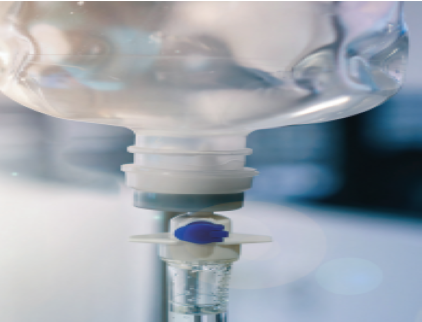Diagnosing Anasarca-induced Desquamation

A recent case report describes anasarca-induced bullae and desquamation as a new variant of the well-known clinical phenomenon edema bullae.
In a case report recently published in Cutis,1 U.S. researchers describe what they write is a new variant of a well-known clinical phenomenon of blisters and subsequent desquamation of the skin on the presence of acute edema.
“In this case report, we describe a new variant that we have termed anasarca-induced desquamation in a 50-year-old man with molting of the entire cutaneous surface after acute edema, in a setting of 40-lb weight gain over 5 days,” according to the paper “The Molting Man: Anasarca-induced full-body desquamation.”
The point here being that severe cutaneous edema can cause bullae followed by generalized skin sloughing.
The case report revolved around an unresponsive homeless man hospitalized due to metabolic ketoacidosis, acute renal insufficiency, hypoalbuminemia due to alcoholic liver disease, and hypothermia. As part of his therapy, he received an inordinate amount of intravenous fluid, leading to a 39.7-pound weight gain. The patient demonstrated nearly whole-body excess fluid accumulation, or anasarca.
Dermatology was consulted due to widespread skin soughing without mucosal changes. A skin biopsy revealed an intra-corneal split with desquamation of the stratum corneum, with very minimal perivascular lymphocytic infiltration.
“Laboratory workup for infectious causes and punch biopsies of skin lesions ruled out Stevens-Johnson syndrome and staphylococcal scalded skin syndrome, which have a similar clinical presentation to anasarca-induced desquamation. In patients with diffuse superficial desquamation in the setting of acute edema, anasarca-induced desquamation is worth investigating to avoid the use of corticosteroids and intravenous antibiotics in this inherently benign condition,” the authors wrote.
In this situation, treatment is primarily aimed at reduction of the etiologic fluid accumulation (edema).
The anasarca improved with diuretics, and as the swelling abated, nearly the entire patient’s skin surface peeled off. The authors dubbed this “anasarca-induced desquamation.” They opined that this is merely a more severe and generalized form of edema blisters. Needless to say, the key point is to differentiate edema associated blistering and desquamation from pemphigoid, herpes zoster, toxic epidermal necrolysis, and staphylococcal scalded skin syndrome.
On a side note, while anasarca is not common, it’s not really rare.
“Anasarca is a serious condition in which there is a generalized accumulation of fluid in the interstitial space. This accumulation of fluid occurs when capillary filtration exceeds the amount of fluid removed via lymphatic drainage. It is caused by a variety of clinical conditions including heart failure, renal failure, liver failure, or conditions involving the lymphatic system,” according to Kattula et al.2
Last year, a case report in Cureus3 documented the case of a 70-year-old man with a history of uncontrolled hypertension who presented to the hospital with swelling of the extremities. He was on minoxidil 10 mg twice daily, according to the authors.
“After discontinuation of minoxidil and starting intravenous diuretics, the patient showed clinical improvement. This case report reviews and explains that minoxidil-induced anasarca should be considered as a differential diagnosis in patients taking minoxidil as knowledge of this rare finding may lead to early diagnosis and management,” they wrote.
References:
1. Kou L, Kold LJ, Kelada AM, et al. The Molting Man: Anasarca-Induced Full-Body Desquamation. Cutis. 2022 April;109(4):221-223 | doi:10.12788/cutis.0493.
2. Kattula SRST, Avula A, Baradhi KM. Anasarca. [Updated 2022 May 8]. In: StatPearls [Internet]. Treasure Island (FL): StatPearls Publishing; 2022 Jan-.
3. Gbadamosi WA, Melvin J, Lopez M. Atypical Case of Minoxidil-Induced Generalized Anasarca and Pleuropericardial Effusion. Cureus. 2021;13(6):e15424. Published 2021 Jun 3. doi:10.7759/cureus.15424.


